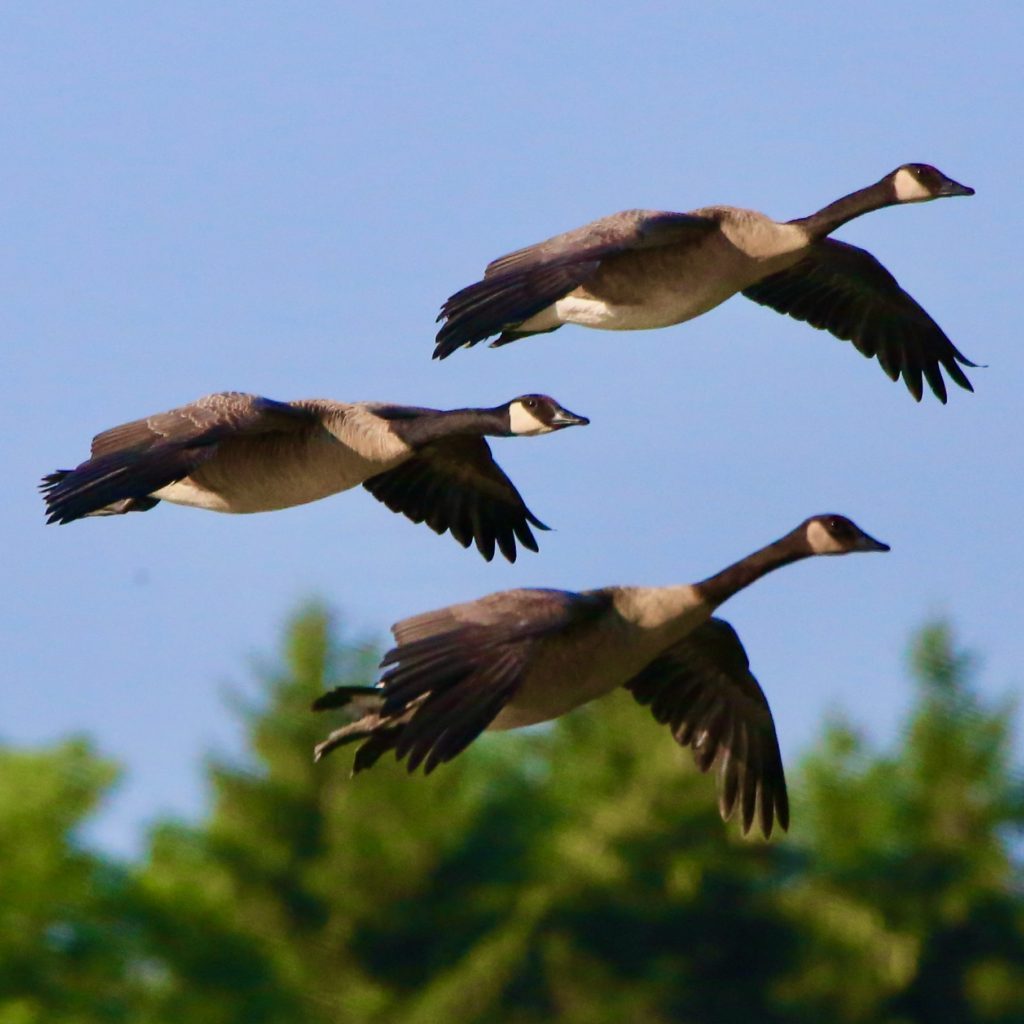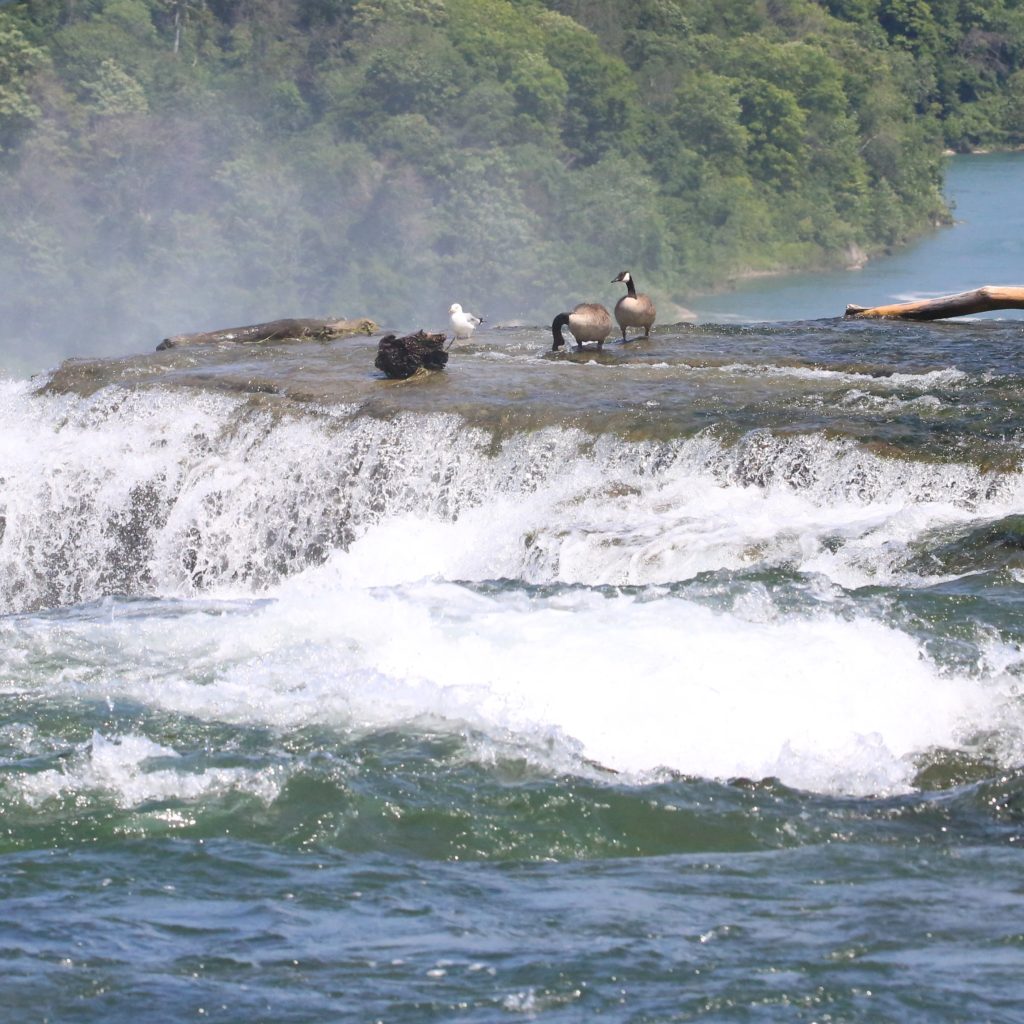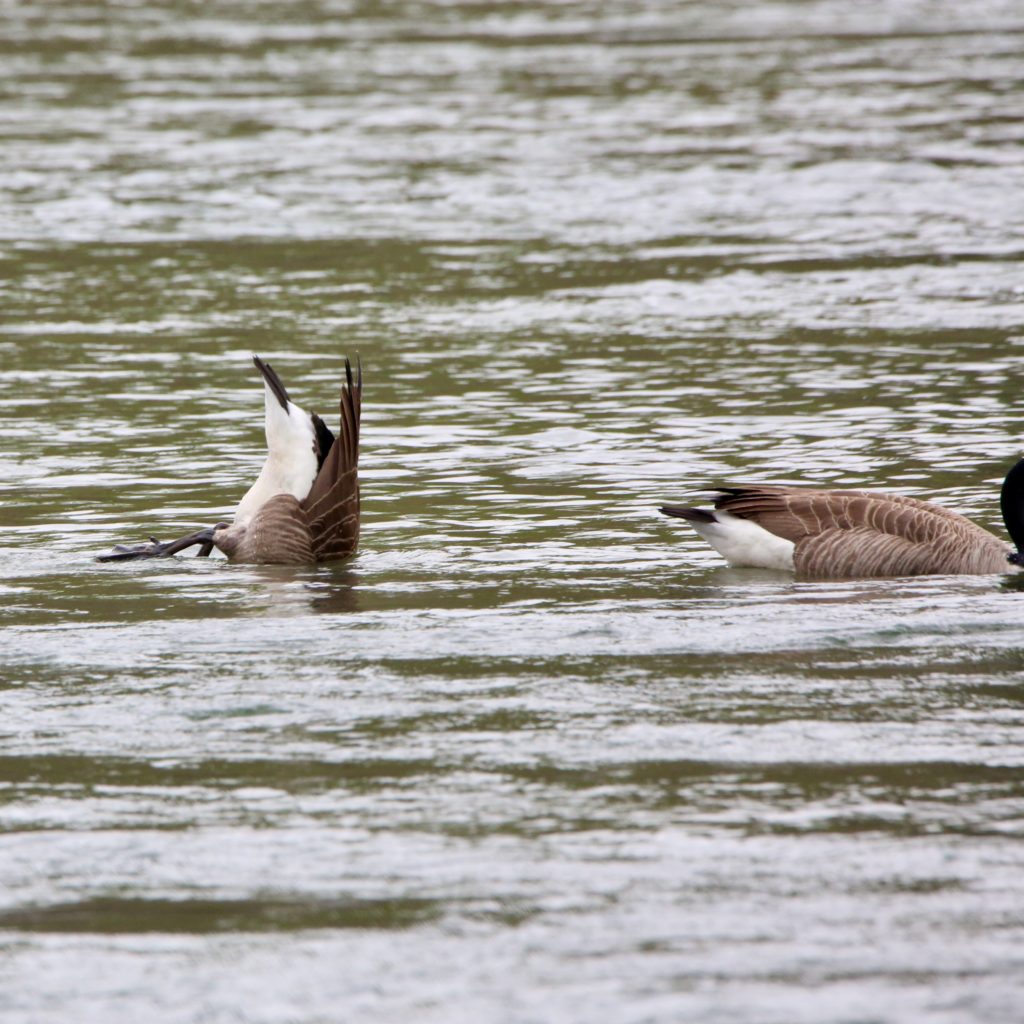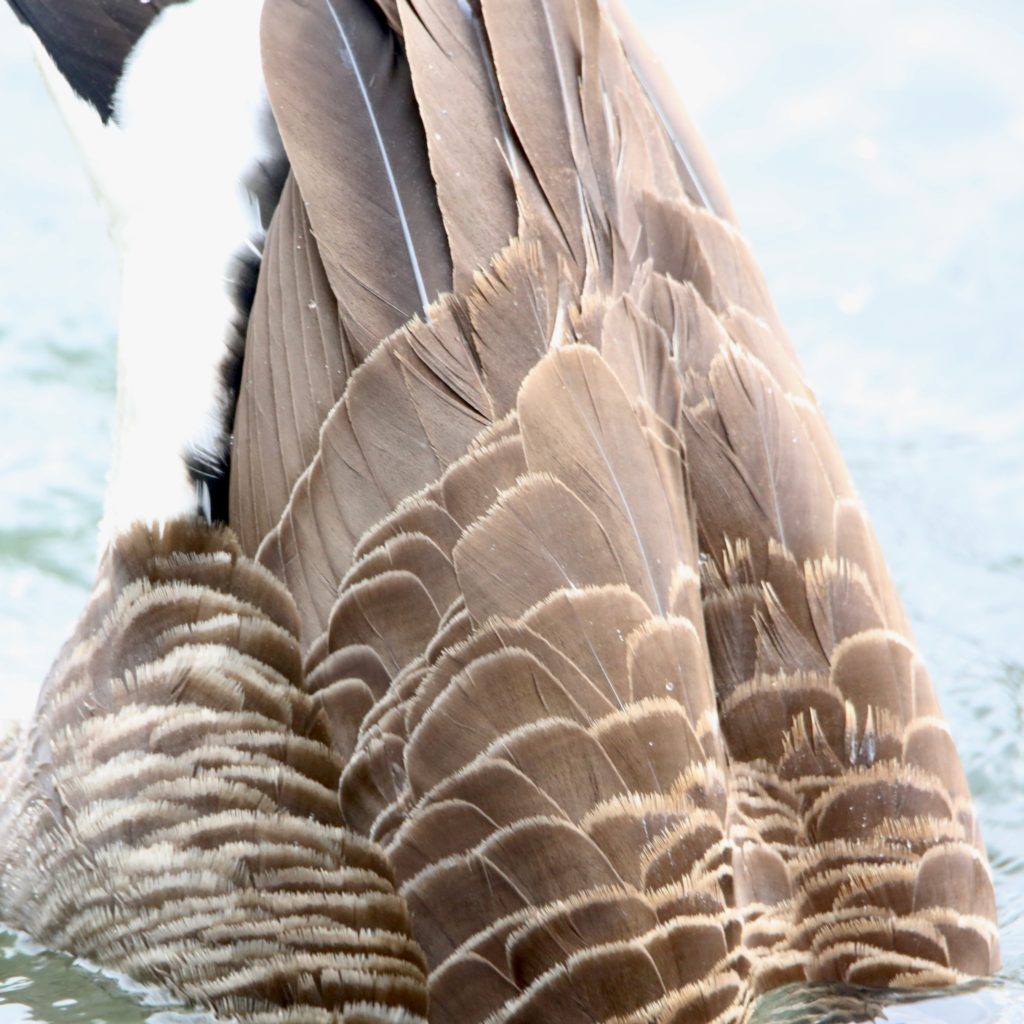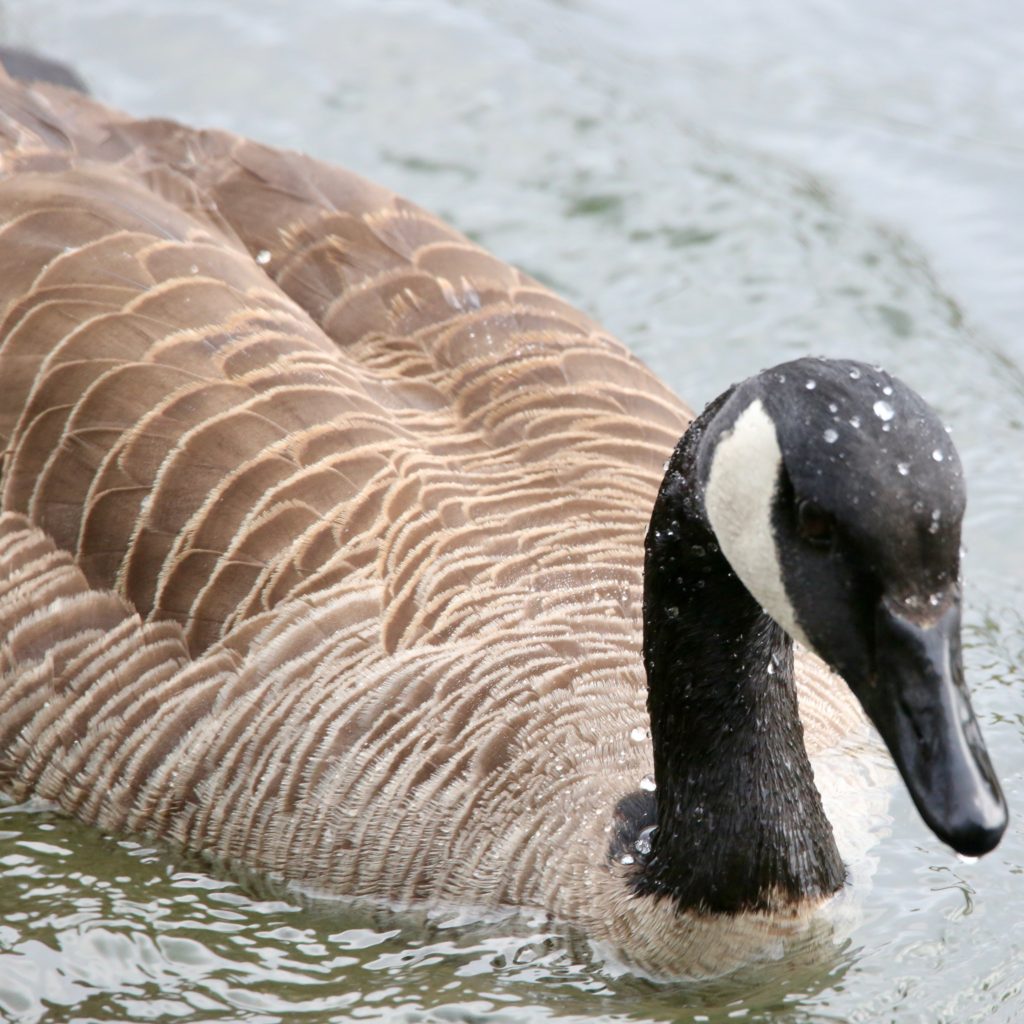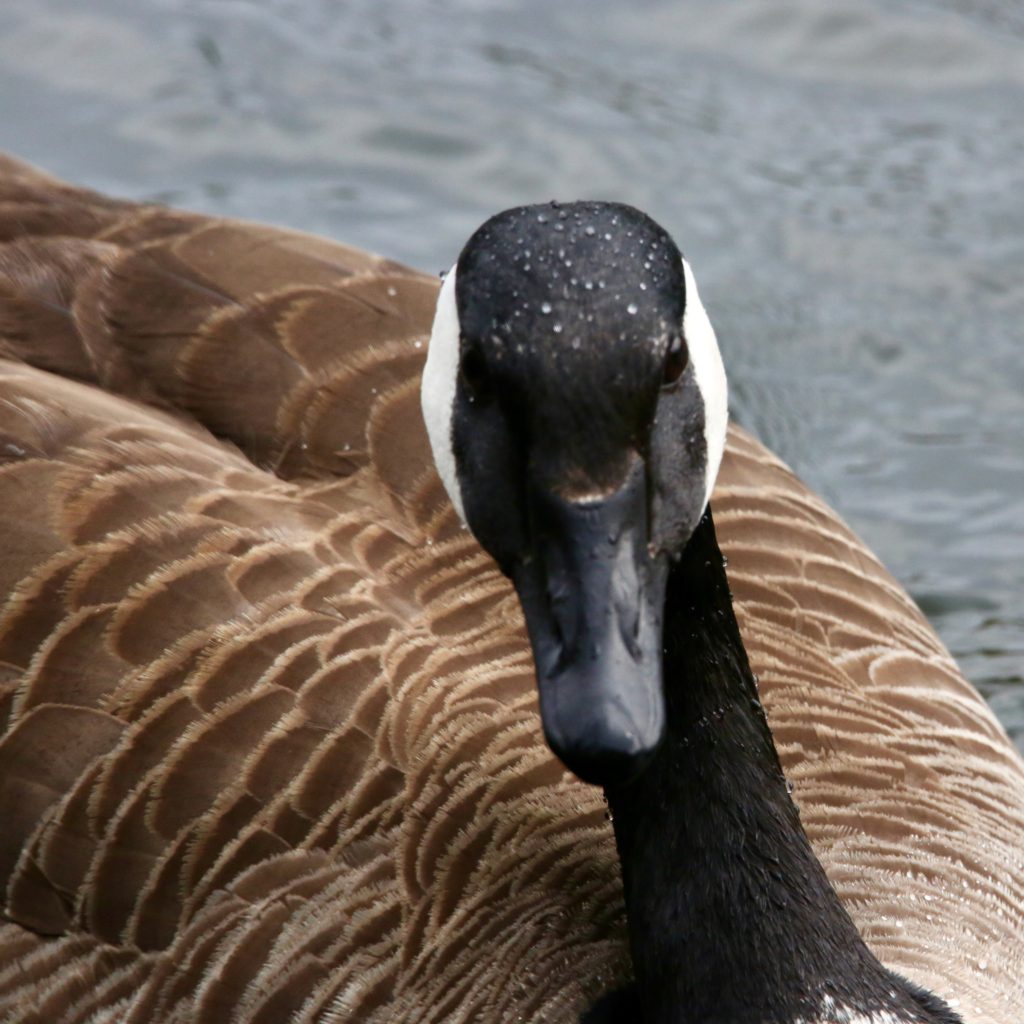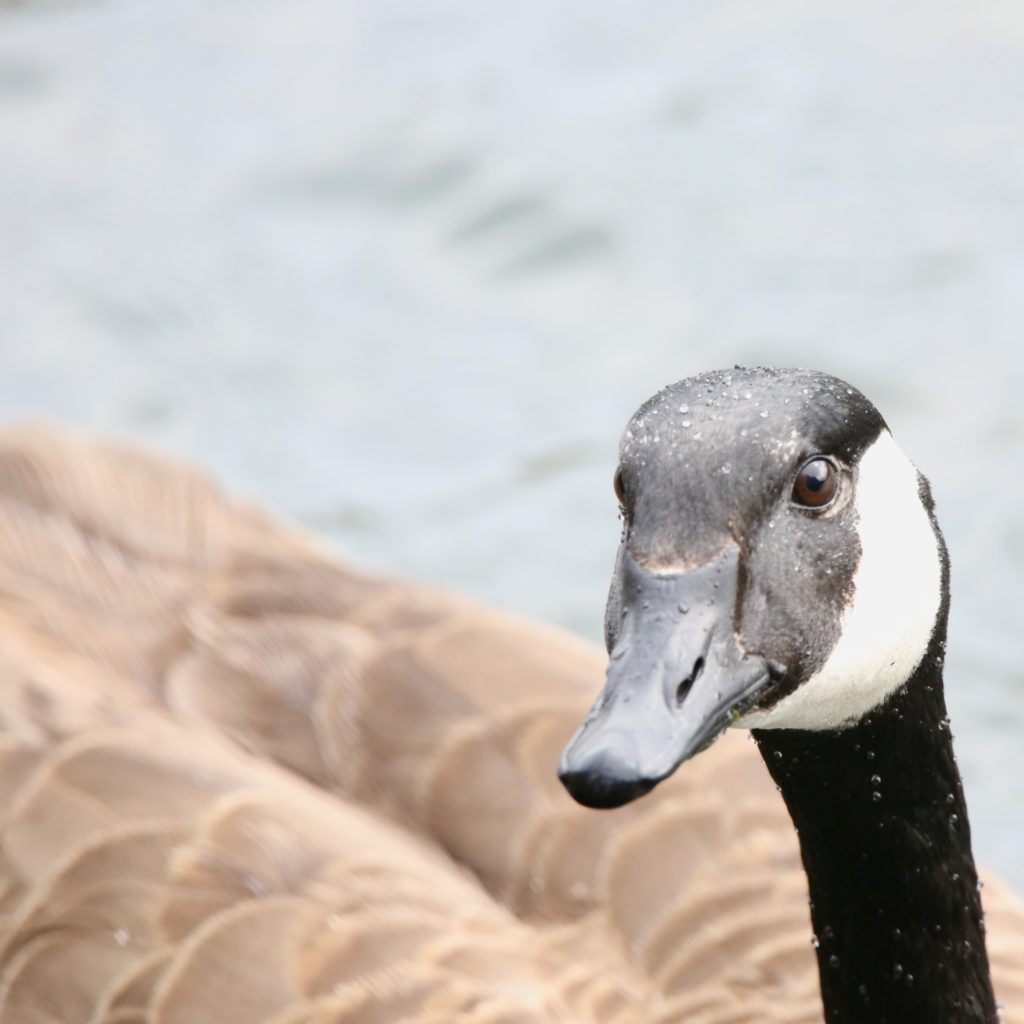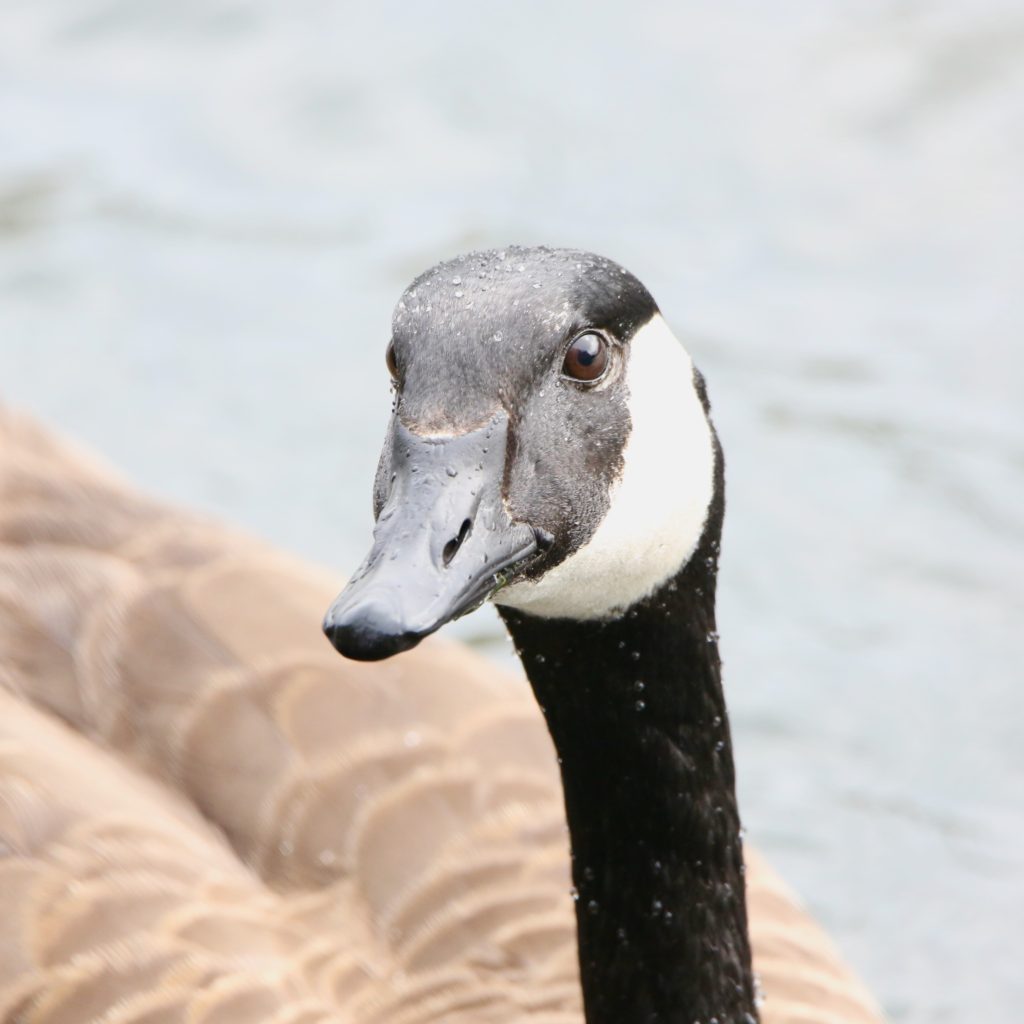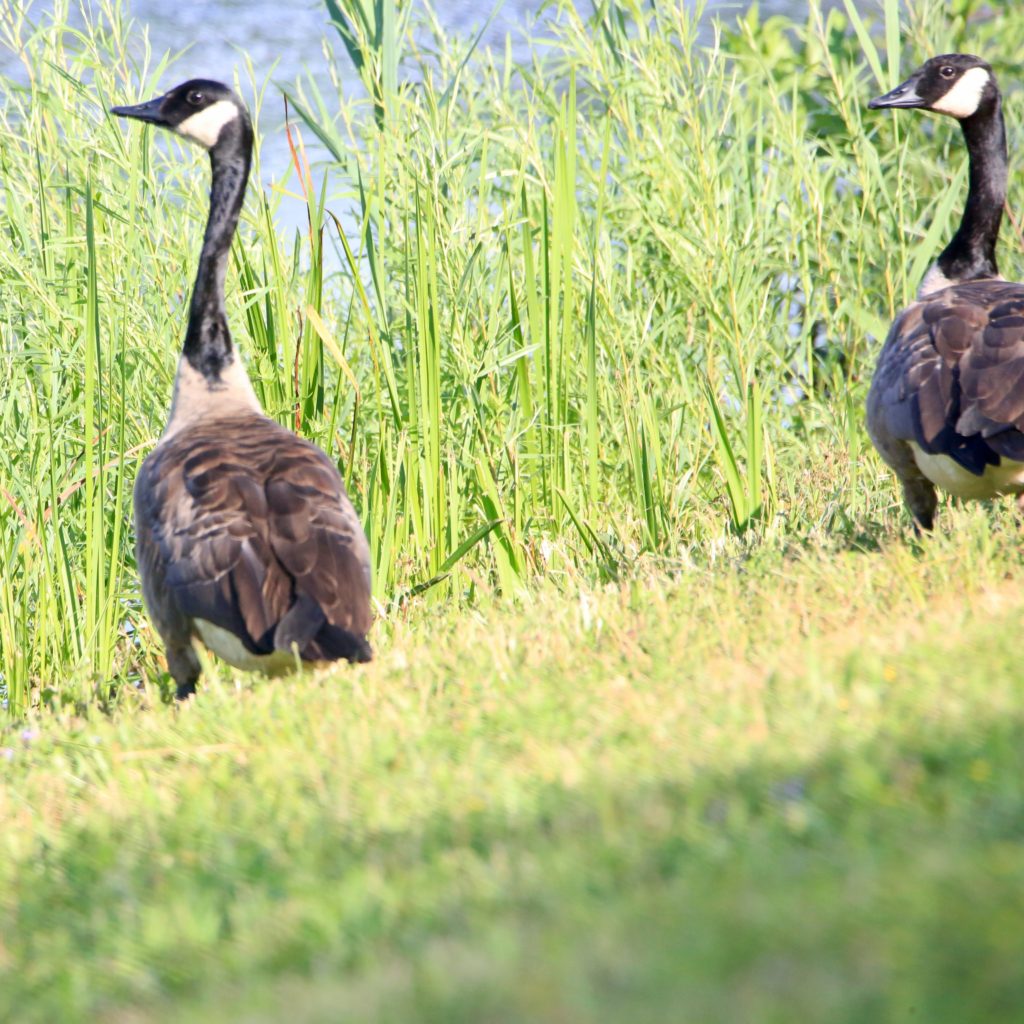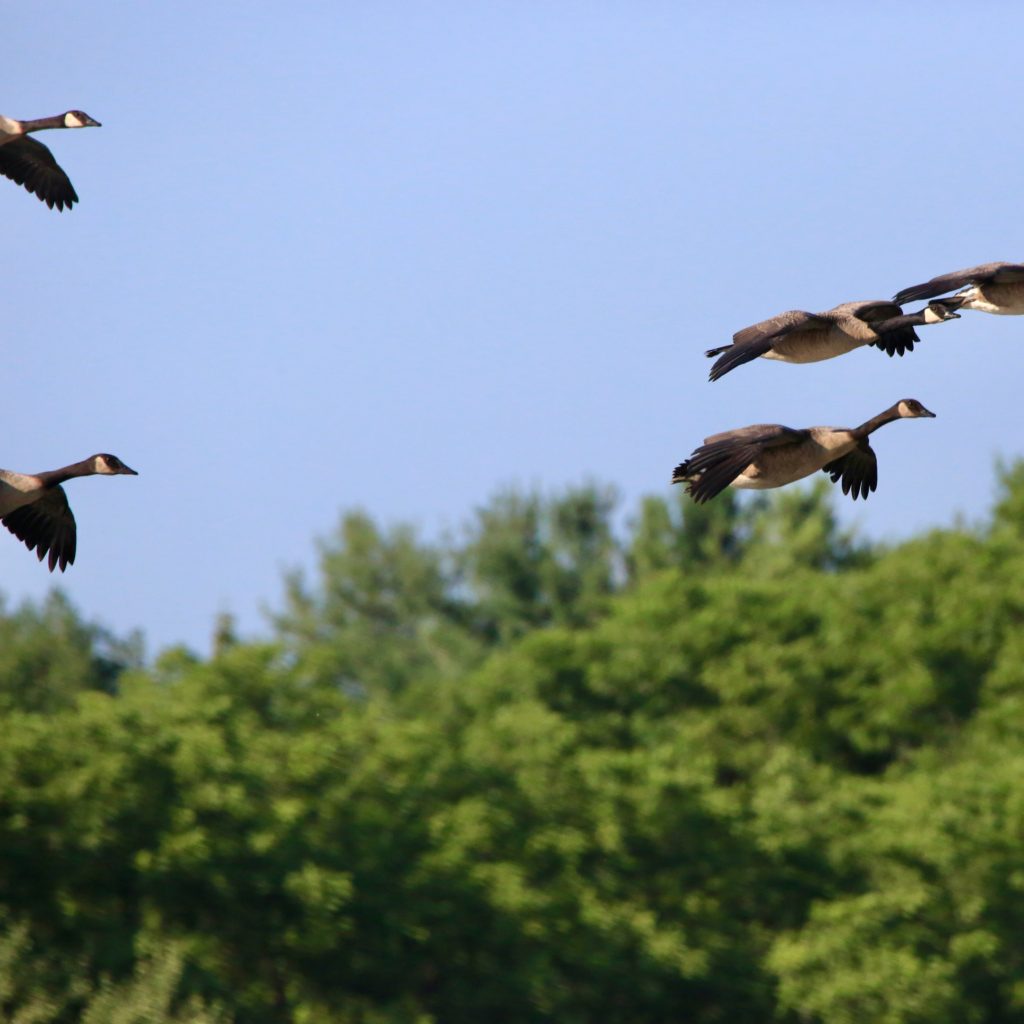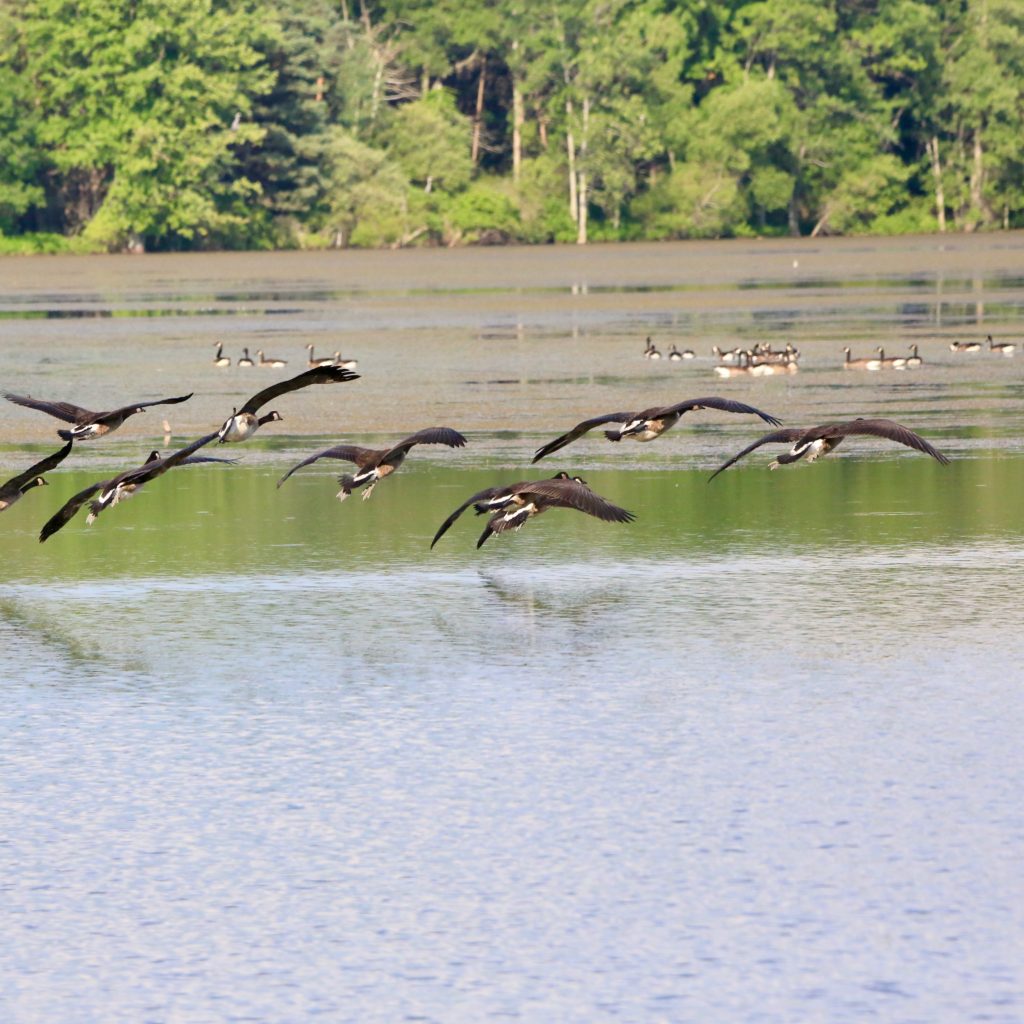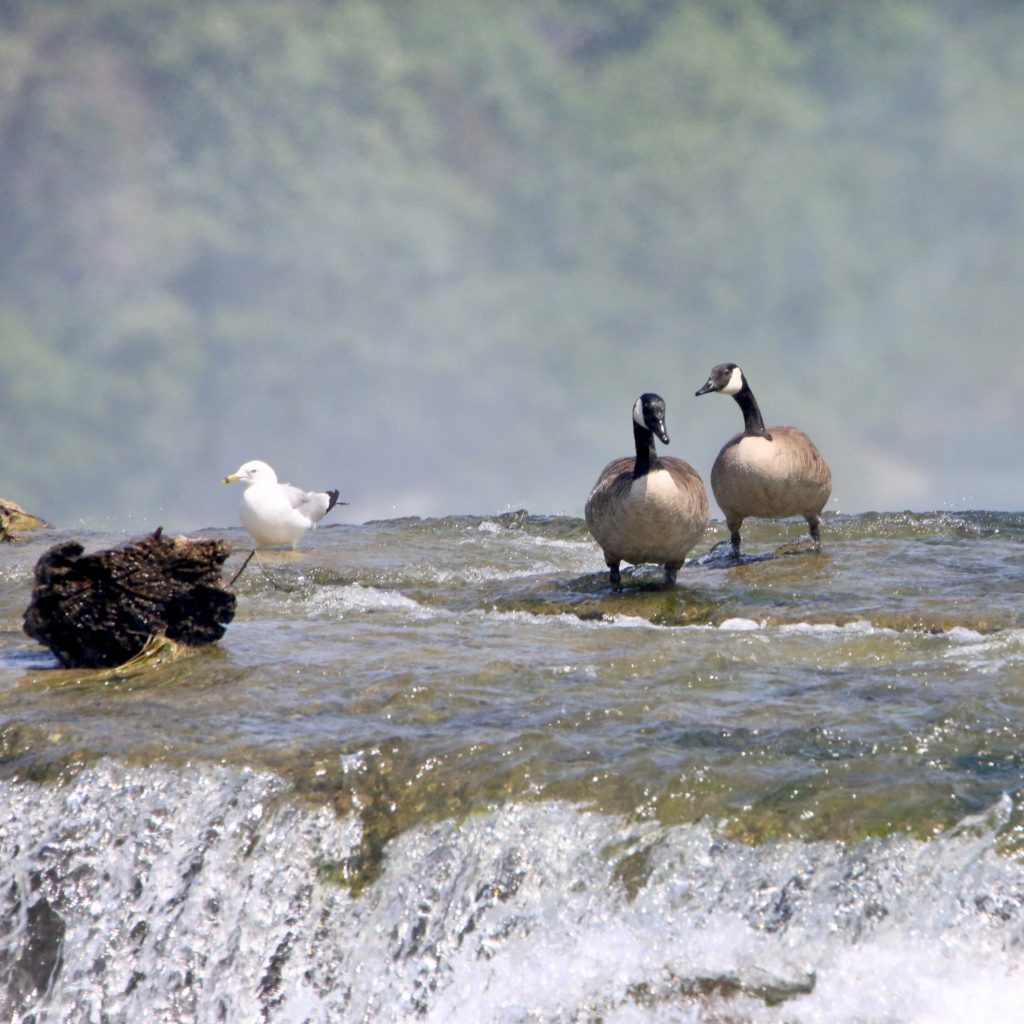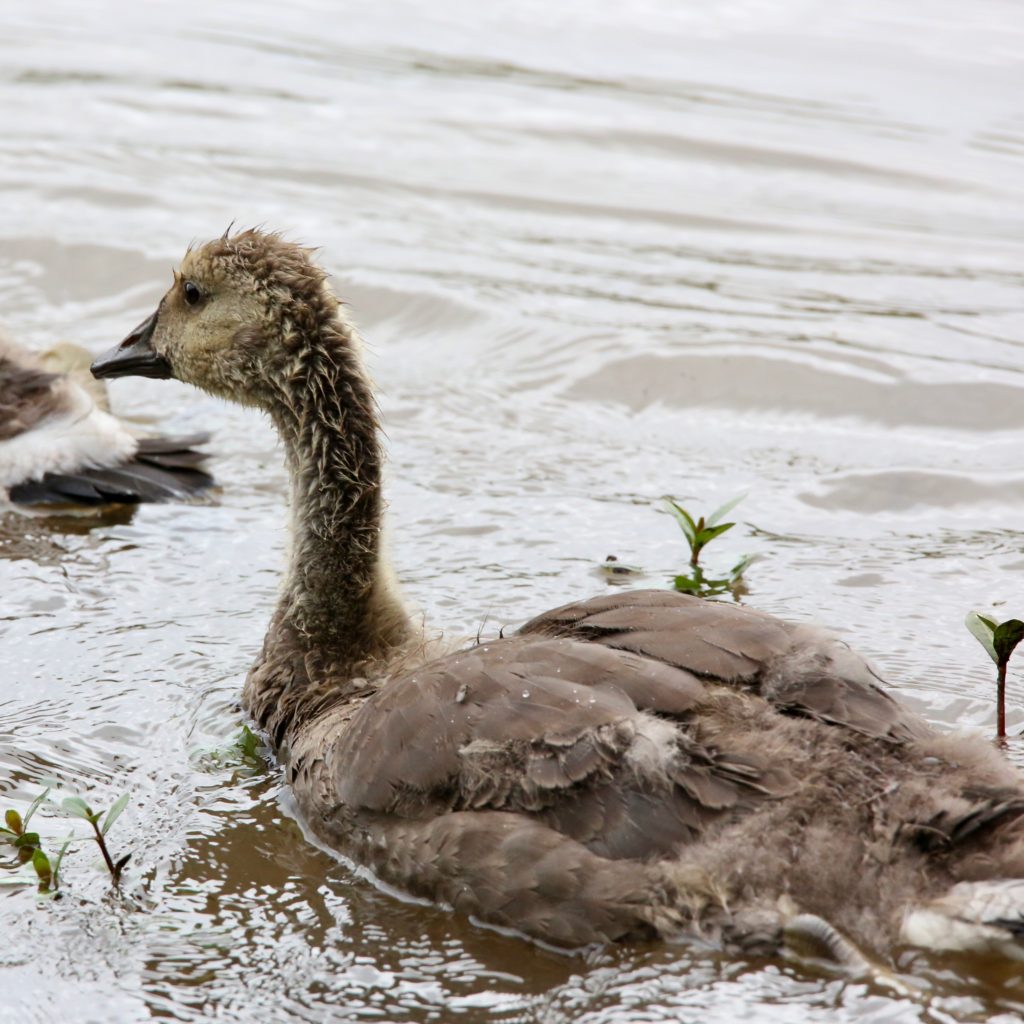
Canada Goose
A Canada Goose is a fun bird to see while bird watching. Below are some tips to help you identify Canada Gooses. We have also put together a list of fun Canada Goose t-shirts, Canada Goose bird patches, bird houses, bird feeders, binoculars, stickers and other fun bird watching items.
About the Canada Goose
A Canada Goose is easily identified using its white chinstrap. Their flocks migrate north to south annually in a V-formation with the top-ranked goose at the very peak leading the flock. The oldest know Canada Goose was an estimated age of 33 years, 3 months.
Description and Identification
Canada Goose have a black head with a white “chinstrap neck”. With seven different subspecies, some of them might be hard to distinguish from the others. The smallest Cackling Goose has a smaller neck with a shorter bill. This can be useful while blending in with the larger Canada Goose. Among the genera Anser, Canadian Goose is the largest living species, on average.
The female goose looks identical to the male, but weighs lighter than the male goose. They are generally 10% smaller than the males in linear order. The calls of both males and females are almost similar but the shrink (call of the female) is shorter and more high pitched than the honk(call of the males).
Canada Goose Color Pattern
They are large birds with a black head and white chin-strap. It also has a black neck and brown body. Canada Geese have tanned breasts and brown upper and underparts.
Canada Goose Size
A Canada Goose has a long neck and large body. Being a big water bird, they have webbed feet and a broad flat bill. The average adult Canada Goose measures:
- Length 70 – 110 cm
- Weight 3000 – 9000 g
- Wingspan 127 – 170 cm
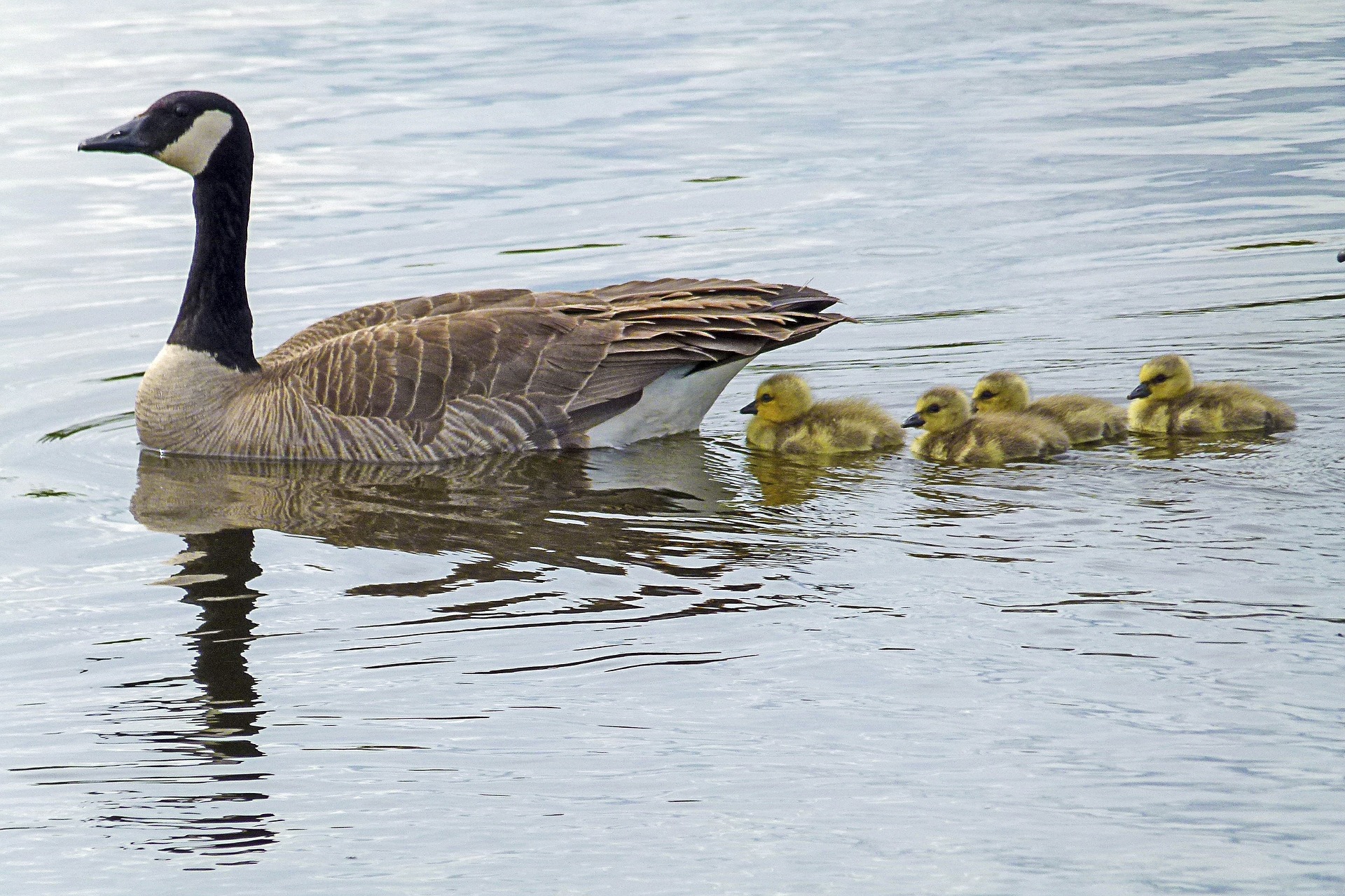
Canada Goose Behavior
A Canada Goose dabbles in shallow water dipping their long necks into the water. They also graze on grass. A Canada Goose is a social bird creating huge flocks just before migration creating lifelong pairs mating depending on size where the larger birds choosing similarly sized mates, same applying to the smaller birds. They are very aggressive to intruders where they produce honking and hissing sounds to make the intruder retreat. Canada Goose uses its wings to fly.
What Canada Geese Eat
Canada Goose are herbivores in nature, but are no stranger to eating small insects and fish. But their diet mainly includes green vegetation and grains. They also snack on beans and grains like rice, wheat, and corn whenever available. When in water, they eat aquatic plants and also feed on algae like seaweeds. In urban areas, they pick up food from dustbins and prefer to graze in open areas.
A Canada Goose is an herbivore with occasional insects added into their diet. They consume vegetation and grains mostly grabbing the grass with its bill and using a swift jerk with its head to tear it apart. Blueberries are one of their favorite meals during spring and summer.
Canada Goose Habitat
Canada Goose prefer to stay near water bodies like lakes, rivers, streams, grain fields, salt and marshes for easy availability of food. They are also drawn to lawns because they can eat the grass and look out for predators to protect their young. So they can also be found in lawns, golf courses, etc.
They mostly live in areas with accessible water sources. They also can be found in grain and grassy fields grazing. A Canada Goose is a frequent inhabitant of parks, golf courses and generally short grass areas, which give them a clear view of incoming danger.
Range and Migration
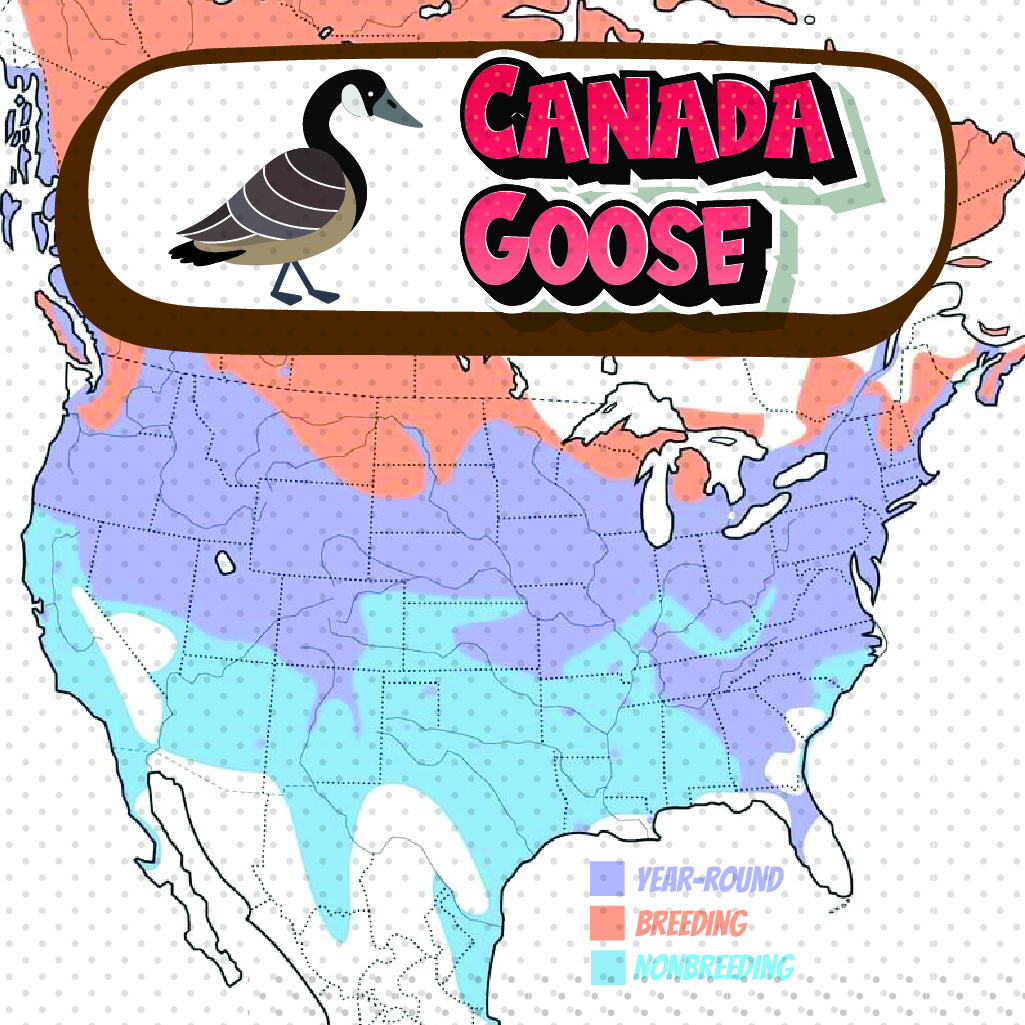
Although Canada Geese are native to North America, they breed in Canada. The Great Lakes bear witness to a huge Canada Goose population. They are seen almost the entire year in the Southern parts of their breeding range. This includes the northern half of the US eastern seaboard and the Pacific coast and is also seen spread out in between. They are migrants to California and South Carolina along with Northern Mexico during the winter. Outside America, they are also present in parts of Eurasia, Finland, and New Zealand.
Baby Canada Geese that are one or two-year-olds, not ready for breeding in the company of geese who lost their nests during the breeding season undertake a moult migration. Some birds individually would fly off for miles in search of large water bodies during the late spring season and early summer for a safer moult. During September and October, they are seen returning back from their migratory routes and are seen flying about randomly. There is also a significant population in North America who do not migrate. So they can be seen flying without any definite route as well.
Nesting
The nest of a Canada Goose is usually situated in higher regions near water bodies like lakes, ponds, and streams including beaver lodges. They lay their eggs on a shallow ground surrounded by plant materials. After the female lays eggs on the nests, both the parents stay there to protect their eggs during incubation but the female stays for a longer period.
Canada Goose Lifecycle
A female Canada Goose usually selects the nesting area and constructs it adding its own feathers after the second egg is laid. Female goose incubates the eggs as the male stands guard. She lays 2 to 8 eggs and takes 25 to 28 days incubating them. It takes a further 50 days before its young ones can leave the nest to join the flock.
Ornithology
Bird Watching Academy & Camp Subscription Boxes
At Bird Watching Academy & Camp we help kids, youth, and adults get excited and involved in bird watching. We have several monthly subscription boxes that you can subscribe to. Our monthly subscription boxes help kids, youth, and adults learn about birds, bird watching, and bird conservation.
Bird Watching Binoculars for Identifying Canada Gooses
The most common types of bird watching binoculars for viewing Canada Geese are 8×21 binoculars and 10×42 binoculars. Bird Watching Academy & Camp sells really nice 8×21 binoculars and 10×42 binoculars. You can view and purchase them here.
Canada Goose T-shirts
If you love the Canada Goose you should purchase a Bird Watching Academy & Camp T-shirt. To help support bird conservation we donate 10 percent to bird conservation activities.
Canada Goose Iron On Patches
Kids, Youth, and Adults love to collect our Bird Watching Academy & Camp iron on patches. Our bird watching patches help you keep track of the birds you have seen an identified. You can also display the patches on our Bird Watching Academy & Camp banners.
The Canada Goose is a great iron on patch to start your collection with. The patches are durable and can be sewn on or ironed on to just about anything.
Canada Goose Stickers
Stickers are a great way for you to display your love for bird watching and the Canada Goose. We sell a monthly subscription sticker pack. The sticker packs have 12 bird stickers. These sticker packs will help your kids learn new birds every month.
Bird Feeders For Canada Goose
There are many types of bird feeders. Here are our favorite bird feeders for your backyard. We use all of these bird feeders currently. Kids will have a great time watching birds eat at these bird feeders. Using this collection of bird feeders will provide a wide variety and many types of birds.
Best Bird Houses for Canada Goose
There are many types of bird houses. Building a bird house is always fun but can be frustrating. These 4 bird houses have become our favorites. Getting a bird house for kids to watch birds grow is always fun. We spent a little extra money on these bird houses but they have been worth the higher price and look great.



